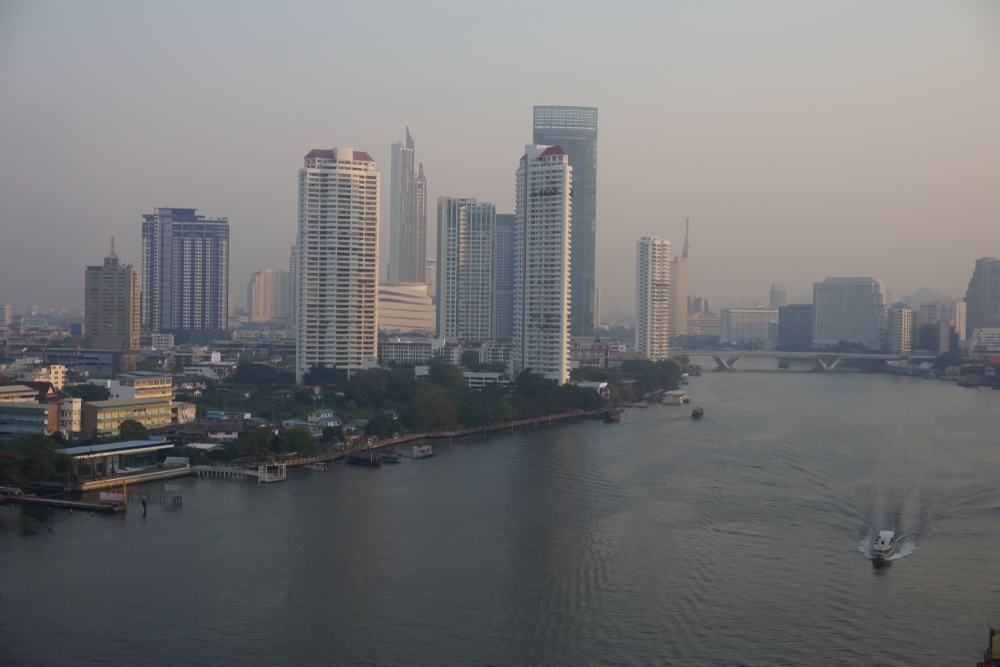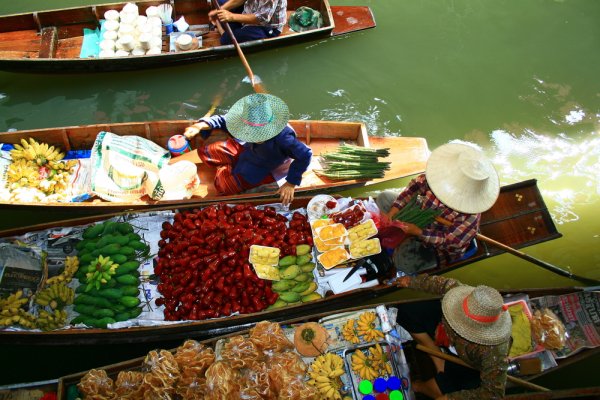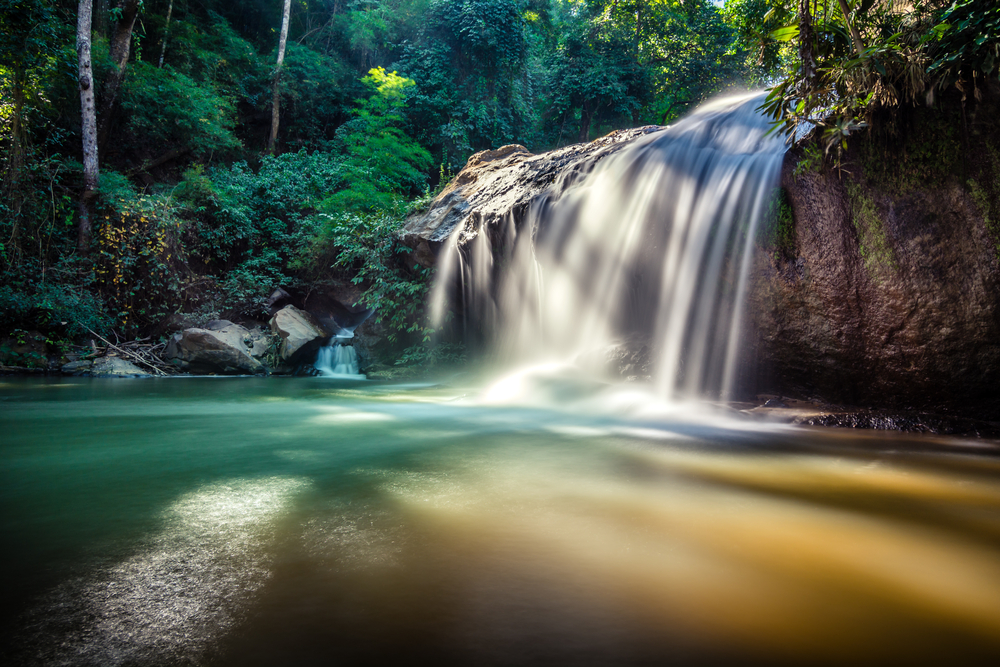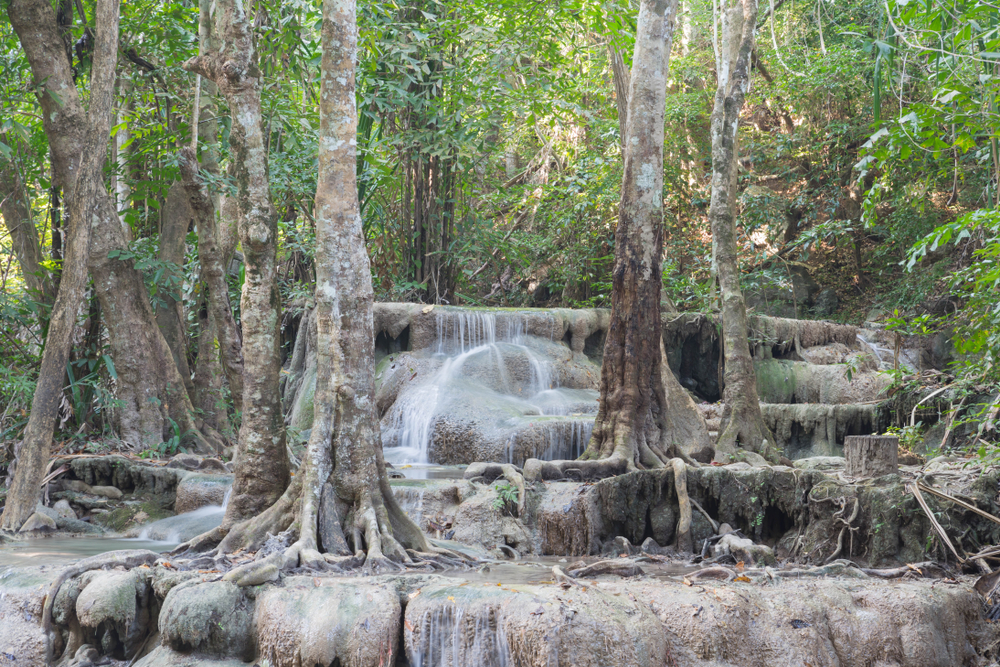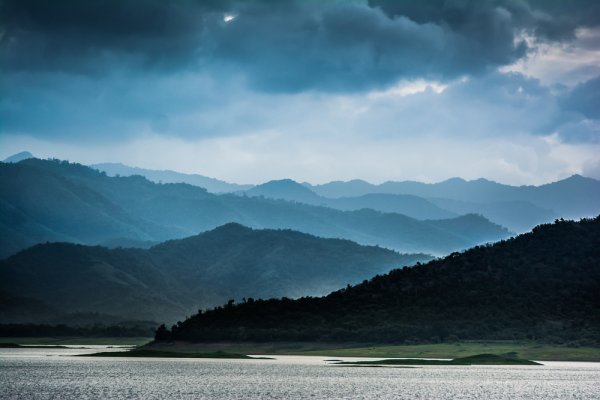Points of Interest
Bung Sam Lan Lake
Nawamin 42 Road Khlong Kum
Bangkok, Thailand
Bung Sam Lan Lake, a freshwater lake that extends over an area of eight hectares (20 acres), boasts some of the world's largest freshwater species of fish. The lake houses major species like the giant Mekong catfish, striped catfish, giant Siamese carp, Chao Phraya giant catfish, Asmall-scale mud carp, and giant snakeheads. Famous as a paradise for fishing enthusiasts and anglers, Bung Sam Lan Lake offers comfortable and traditional Thai bungalows, private huts, restaurants, large fishing pontoons, rigging tables, weighing scales, and a supermarket for tourists.
Bungsamran Fishing Park
21/596 Soi Navamin 42 Navamin Road
Bungkum, Bangkapi, Bangkok 10240, Thailand
Bungsamran Fishing Park, Thailand’s most famous freshwater lake and recreational fishing spot, extends over an area of 8 hectares (20 acres) and boasts some of the world’s largest freshwater species of fish. The lake houses major species like the giant Mekong catfish, striped catfish, giant Siamese carp, Chao Phraya giant catfish, Amazonian arapaima, small scale mud carp, and giant snakeheads. Famous as a paradise for fishing enthusiasts and anglers, Bung Sam Lan Lake offers comfortable and traditional Thai bungalows, private huts, food services, restaurants, large fishing pontoons, rigging tables, weighing scales, and a supermarket for tourists.
Chao Phraya River
แม่น้ำเจ้าพระยา Bangkok and the Gulf of Thailand
Muang District, Nakhon Sawan Province, Thailand
Chao Phraya (River of Kings), regarded as the lifeline of the Thai people, originates at the confluence of four rivers, namely, Ping, Yom, Wang, and Nan. It drains an area of nearly 160,000 square kilometers and stretches for a length of nearly 1,085 kilometers (674 miles) of Thai rural and urban countryside. At the low alluvial plain starting below the Chainat Dam, the Chao Phraya River splits into small canals that support the irrigation of rice paddies. The river flows past the mountains dividing southern China and the Southeast Asian mainland, the Burmese mountains, and the sprawling plateau occupied by the Ban Chiang people. A wide variety of fish and birds enhance the beauty of this waterway.
Damnoen Saduak Floating Market
Ratchaburi Province, Thailand
The region's most bustling and lively place, the Damnoen Saduak Floating Market operates across a network of small klhongs (canals) in numerous small rowboats. Vendors sell tropical fruit, vegetables, delicious local food cooked on floating kitchens, ready-to-drink coconut juice, and many more fresh products. Visitors can take leisure rides on traditional long-tailed boats.
Doi Suthep-Pui National Park
ดอยสุเทพปุย Mueang Chiang Mai District, Thailand
Established in 1987 and situated at altitudes ranging between 400 and 1,000 meters (1,312–3,281 feet), the Doi Suthep-Pui National Park is a natural habitat for a wide variety of flora and fauna. The prominent features include an over 600-year-old Buddhist monastery, Wat Prathat Doi Suthep, which attracts pilgrims from around the globe; a royal palace; and two Hmong villages. The terrain includes thick evergreen forests, waterfalls, streams, and cultivable land suitable mainly for wetland rice and cash crops. The park also facilitates mountaineering, hiking, biking, and watching of exotic wildlife, including numerous species of bird and butterflies.
Erawan National Park
Kanchanaburi Province, Western Thailand
Established in 1975 and extending over 550 square kilometers (212 square miles) at altitudes ranging between 165 and 996 meters (541and 3,268 feet), Erawan National Park is particularly famous for its seven-tired Erawan Falls, which is believed to resemble a three-headed white elephant of Hindu mythology called Erawan. Other major features include mixed deciduous forests, many tree and shrub species, varied fauna, mountains, limestone cliffs, caves with strange-shaped stalactites and stalagmites, important streams (including Mong Lai, Omtala, Khao Phang, and Sadae), rivers, and valleys. The fauna includes Indian elephants, tigers, Sambar deer, common muntjac, Siamese hares, white-handed gibbons, flying squirrels, Kalij pheasants, gray peacock pheasants, banded kraits, Asiatic rock pythons, king cobras, greater brook carps, and waterfall crabs.
Khao Yai National Park
Nakhon Ratchasima, Pak Chong 30130, Thailand
Founded in 1962 as Thailand's first national park and extending over an area of 216,800 hectares (535,725 acres), Khao Yai National Park is located at altitudes ranging between 400 and 1,000 meters (1,312–3,281 feet). Its prominent features include more than 2,500 species of plants, 320 species of birds, and 67 species of mammals (including Asiatic black bears, Malaysian sun bears, Asian elephants, tigers, leopards, gibbons, and Indian Sambar deer), evergreen forests, grasslands, many mountains, rivulets, and waterfalls (including Haew Narok at 80 meters/262 feet). The park also offers more than 50 kilometers (31 miles) of hiking trails, nighttime wildlife viewing, golf courses, private lodging, and a few hotels.
Patong Beach
หาดป่าตอง Patong
Phuket Island, Thailand
One of Southeast Asia's most developed tourist beaches, Patong Beach on Phuket Island's west coast is Thailand's most famous natural attraction. Its main features include a 3,000-meter-long (9,843 feet) crescent shoreline, pools for diving and swimming, great food, hotels, shopping facilities, and an eclectic nightlife. There is plenty of space for sunbathing, picnicking, and relaxing.
San Kamphaeng Hot Spring
Moo 7
Baan Pong Hom Ban Sahakorn, Mae On 50130, Thailand
Spreading over 16 hectares (40 acres), San Kamphaeng Hot Spring is most popular for its mineral water baths and a complete package of health treatments that attract a large influx of visitors throughout the year. The spring's water has a high sulfur content and an average temperature of 100 degrees Celsius (212 degrees Fahrenheit) at the surface level. The water comes from a deep underground source and is reputed to heal many diseases and improve blood circulation. A lush park with a variety of flowers, shady trees picnic spots, camping sites, and stunning natural landscapes surrounds the spring. Other amenities include swimming pools, restaurants, lodging, handicraft shops, the privately operated Rung Arun Hot Spring, and the Bo Sang Umbrella Village.
Copyright © 1993—2025 World Trade Press. All rights reserved.

 Thailand
Thailand 